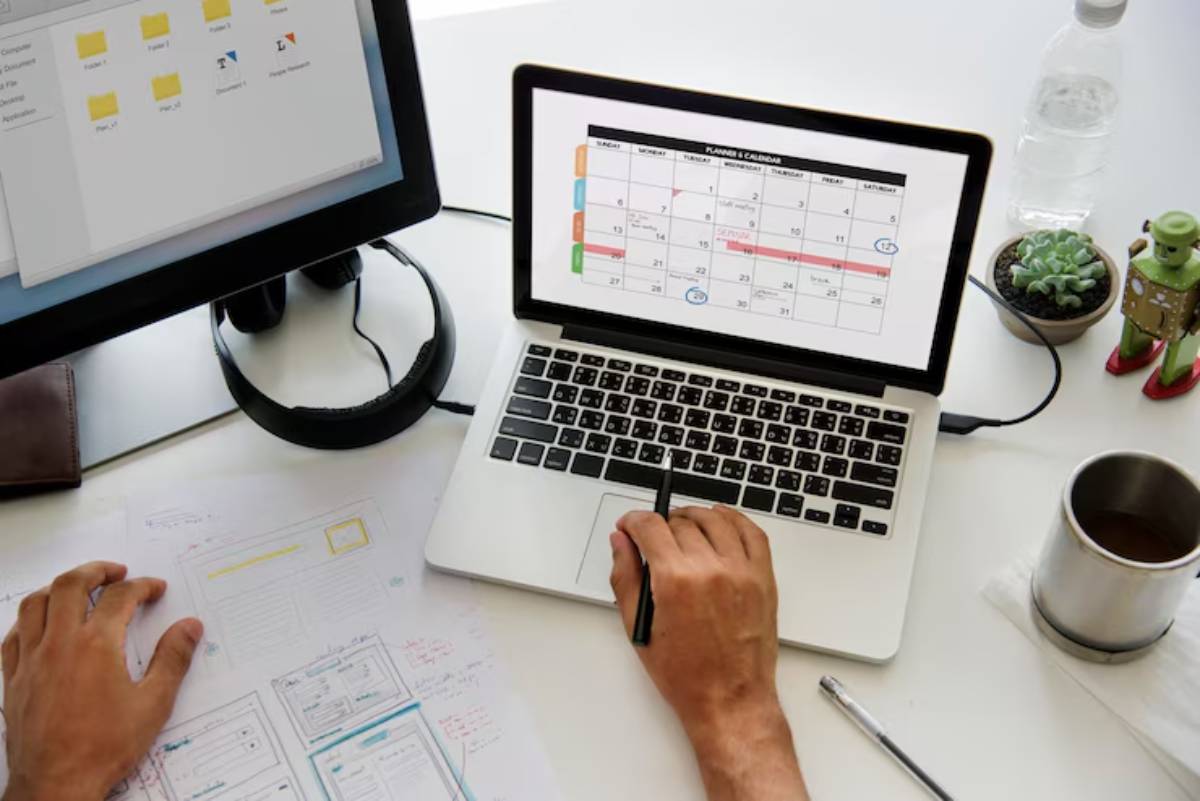
Planning Breaks Between Time Blocks for Recovery
You’ve mapped out your day with precision. Each hour is assigned to a task, a meeting, or a creative sprint. But by 2 PM, your mind is foggy, your motivation is low, and your energy has flatlined. Sound familiar?
What if your productivity problem isn’t the planning—it’s the lack of recovery?
Strategic, intentional break planning between time blocks can be the difference between burnout and breakthrough. This guide will walk you through smart energy recovery strategies, the science of rest, and actionable steps to create a schedule that restores as much as it demands.
Let’s ditch the guilt and embrace a work rhythm that makes space for breath, focus, and renewal.
Why Breaks Are Not Wasted Time
The Productivity Myth
Many of us have internalised the idea that working longer equals working better. But the research says otherwise.
A study by Draugiem Group found that the most productive employees worked for 52 minutes and took 17-minute breaks. These short pauses helped them sustain focus longer than those who powered through.
Breaks don’t disrupt productivity; they renew it.
What Happens When You Skip Breaks
- Mental fatigue sets in, reducing focus and increasing mistakes
- Cognitive overload makes even simple tasks feel harder
- Creativity drops, and problem-solving ability plummets
- Decision fatigue leads to procrastination and poor judgment
Taking intentional rest between time blocks isn’t a luxury. It’s essential.
Understanding Recovery: What Makes a Break Effective?

The 4 Rs of Recovery
To plan quality breaks, aim for:
- Restoration: Recharge mentally and physically
- Reflection: Mentally step back and regain perspective
- Reconnection: Social or emotional refreshment
- Reset: Switch modes or energy states
Active vs. Passive Breaks
- Active breaks stimulate or energise: walking, chatting, stretching
- Passive breaks calm and soothe: meditating, breathing, listening to music
Pick what you need most based on your mental and physical state after a time block.
Match Breaks to Task Intensity

After Deep Work Blocks
You’ve just spent 90 minutes writing, coding, or designing. Your focus muscles are spent.
Recommended Breaks:
- 15-minute walk
- Guided breathing session
- Staring out the window (yes, really)
After Meetings or Social Tasks
Zoom fatigue is real. Your social brain needs rest, too.
Recommended Breaks:
- 5 minutes of silence
- Gentle yoga poses
- Doodling or journaling
After Admin or Repetitive Tasks
These are mentally dull but still tiring. Reset your senses.
Recommended Breaks:
- Put on energising music and stretch
- Brew a cup of tea or coffee
- Step outside for fresh air
Break Duration: How Long Is Long Enough?

Micro-Breaks (1–5 Minutes)
Perfect for light tasks. Help prevent the buildup of tension.
Examples:
- Look away from the screen (20-20-20 rule)
- Shoulder rolls or desk stretches
- Water refill or bathroom trip
Medium Breaks (10–20 Minutes)
Ideal after focused or collaborative work.
Examples:
- Mindful tea break
- Read a few pages of fiction
- Chat with a colleague or housemate
Long Breaks (30–60 Minutes)
Used once or twice per day to mark major transitions. Recharge deeply.
Examples:
- Nature walk
- Power nap (15–20 minutes)
- Creative hobby (sketching, playing an instrument)
How to Time Breaks in Your Schedule
1. Add Buffer Blocks
Don’t cram your calendar. After every 90–120 minutes of work, insert a 10–20-minute white space buffer.
2. Use the Pomodoro Rhythm
Work 25–40 minutes, break for 5. After 4 cycles, take a 15–30-minute break. Great for tasks that aren’t naturally time-bound.
3. Block Dedicated Recovery Time
In your weekly plan, reserve longer breaks:
- Lunch hour (away from your screen)
- Afternoon recharge (especially post-lunch dip)
- End-of-day wind down
4. Align With Your Energy Peaks
Use breaks to preserve your peak windows. Learn more about matching time blocks to energy peaks.
Build a Break Ritual
Breaks are more effective when you have cues and habits that anchor them.
Morning Ritual Example:
- Finish morning block at 10:30 AM
- Put on a favourite lo-fi playlist
- Stretch with 5 yoga poses
- Brew a fresh cup of tea
Afternoon Ritual Example:
- Step away from the desk at 3 PM
- Go for a 10-minute walk
- Reflect with a journal prompt: “What have I accomplished today?”
Evening Ritual Example:
- Shut down your computer
- Light a candle or switch on the lighting
- Write down 3 wins from the day
Tools to Encourage Break Planning
Digital Tools
- Stretchly: Pop-up reminders for screen breaks
- Focus Booster: Pomodoro-based timer with built-in breaks
- TimeOut (Mac): Fades the screen to enforce a pause
- Google Calendar: Pre-schedule breaks as events
Physical Reminders
- Hourglass timers
- Sticky notes on your monitor
- A water bottle that needs refilling often!
Real-Life Example: Jordan the Consultant
Jordan used to block back-to-back coaching calls with no room to breathe.
Problem: She felt drained by 3 PM and often got migraines.
Fix:
- Introduced 10-minute buffers between calls
- Took a 20-minute midday walk during lunch
- Added “green breaks”: stepping outside or tending plants
Results:
- Improved client engagement
- Fewer headaches
- Rediscovered creative energy for content creation
Breaks and Your Brain: A Look at the Science
- The default mode network (DMN) activates during rest and helps with memory consolidation and problem-solving
- Physical movement increases blood flow and oxygen to the brain
- Visual rest (staring at something distant) reduces eye strain
Breaks aren’t just mental. They’re physical, emotional, and neurological reset buttons.
Common Mistakes in Break Planning
Skipping Breaks to Finish Faster
You’ll often go slower overall. Breaks sustain output over the long haul.
Scrolling as a Default
Mindless social media might stimulate, but it rarely restores. Choose intentional rest.
Ignoring Transitions
Jumping straight from one intense block to another? Add 5 minutes to shift gears.
Break Guilt
Taking breaks doesn’t make you lazy. It makes you smart, sustainable, and human.
Common Concerns About Breaks in Time Blocks
How often should I take breaks? Every 60–90 minutes is ideal. Your brain needs rest before it begs for it.
What’s the best break if I work in a noisy or open space? Use headphones, find a stairwell, or close your eyes for 2 minutes. Even micro-breaks help.
I’m a parent with limited quiet time—how do I make breaks work? Stack breaks with daily tasks. Turn chores into low-focus resets. Add one intentional break per day to start.
Conclusion: Rest to Rise
You don’t need more hours. You need better rhythms.
By planning thoughtful, restorative breaks between your time blocks, you align with your biology and boost your resilience.
Breaks help you:
- Maintain creative energy
- Prevent burnout
- Improve cognitive performance
- Feel more human and less like a to-do list
Try this today: Add one 10-minute recovery block into your afternoon. Use it to move, breathe, reflect, or simply be still.
For more recovery-supportive planning, explore how to transition between time blocks without losing focus.


